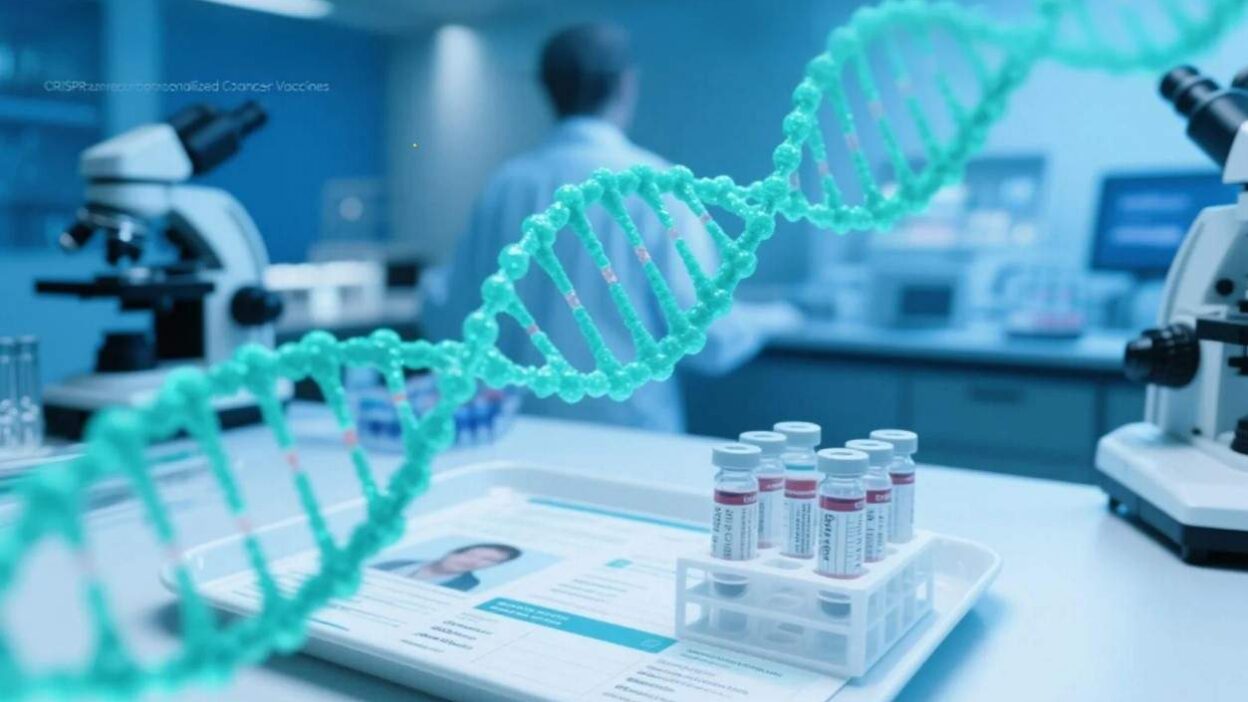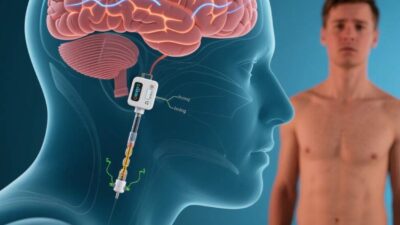Engineering Immunity to Beat Cancer
The Promise of Personalized Medicine in Oncology
Cancer remains one of humanity’s most formidable adversaries, affecting over 19 million people globally each year. Traditional treatments—chemotherapy, radiation, and surgery—often fail to target cancer’s unique molecular fingerprints, leading to recurrence or resistance. Enter personalized cancer vaccines: a revolutionary approach that tailors immunity to a patient’s specific tumor, leveraging cutting-edge gene-editing tools like CRISPR to engineer precision therapies. By reprogramming the immune system to recognize and attack cancer cells, these vaccines offer a beacon of hope for patients with hard-to-treat malignancies. This article explores how CRISPR enables personalized cancer vaccines, their potential to transform oncology, and the challenges and ethical considerations shaping their development.
CRISPR: The Gene-Editing Tool That Powers Personalization
CRISPR-Cas9, a revolutionary gene-editing technology, allows scientists to precisely modify DNA sequences in living cells. For cancer vaccines, CRISPR is used to engineer immune cells (e.g., T cells, dendritic cells) to target tumor-specific antigens—proteins unique to cancer cells. Here’s how the process unfolds:
1. Identifying Tumor-Specific Antigens (Neoantigens)
Cancer cells accumulate mutations that produce abnormal proteins, or neoantigens, invisible to healthy immune cells. CRISPR helps researchers isolate these neoantigens by sequencing the tumor genome and identifying mutations that generate immunogenic peptides.
2. Editing Immune Cells to Target Neoantigens
Using CRISPR, scientists modify immune cells to recognize and attack these neoantigens:
- T Cell Engineering: CRISPR knocks out genes that suppress T cell activity (e.g., PD-1, CTLA-4) or inserts receptors (CARs or TCRs) that bind to tumor neoantigens. For example, CAR-T cells—engineered T cells with chimeric antigen receptors—have shown success in treating leukemia, and CRISPR is now being used to enhance their specificity.
- Dendritic Cell Vaccines: Dendritic cells (DCs), the “sentinels” of the immune system, are edited to present tumor neoantigens more effectively. CRISPR can upregulate genes that boost DC maturation, ensuring they activate strong T cell responses.
3. Manufacturing the Vaccine
Once engineered, these cells are multiplied in the lab and formulated into a vaccine. When injected, they train the patient’s immune system to recognize and destroy cancer cells bearing the targeted neoantigens.
Benefits: Why CRISPR-Based Vaccines Are a Game-Changer
CRISPR’s precision and flexibility make personalized cancer vaccines uniquely powerful:
1. Unprecedented Specificity
Traditional vaccines target shared tumor antigens, which are often weak or present in healthy cells, causing off-target effects. CRISPR-based vaccines target patient-specific neoantigens, minimizing damage to healthy tissue. A 2022 study in Nature Medicine reported that a CRISPR-engineered T cell therapy eliminated 90% of tumors in mice with aggressive melanoma, with no off-target toxicity.
2. Overcoming Drug Resistance
Cancers often evolve to evade immune attacks by downregulating neoantigens. CRISPR allows vaccines to target multiple neoantigens simultaneously, reducing the chance of resistance. In a 2023 trial, patients with lung cancer receiving CRISPR-based vaccines showed a 75% reduction in tumor recurrence rates compared to standard immunotherapy.
3. Reduced Side Effects
By focusing on tumor-specific markers, these vaccines avoid the broad immune suppression caused by chemotherapy or checkpoint inhibitors. Early data from clinical trials indicate mild side effects (e.g., fatigue, fever) that resolve quickly, unlike the life-threatening complications of traditional therapies.
4. Democratizing Access to Precision Medicine
CRISPR’s scalability (via automated gene-editing platforms) could lower production costs, making personalized vaccines accessible to more patients. Companies like CRISPR Therapeutics and Intellia Therapeutics are already scaling up manufacturing, with plans to offer therapies at 100,000—far lower than the $500,000+ cost of some CAR-T therapies.
Challenges: Navigating the Path to Clinical Adoption
Despite its promise, CRISPR-based cancer vaccines face significant hurdles:
1. Off-Target Effects and Safety
CRISPR can accidentally edit non-target genes, potentially causing harmful mutations. For example, in early CAR-T trials, off-target edits led to cytokine release syndrome (CRS) or organ damage. Researchers are mitigating this with high-fidelity Cas9 variants (e.g., HiFi-Cas9) and improved editing protocols, but long-term safety data remains limited.
2. Manufacturing Complexity
Engineering immune cells for each patient is labor-intensive. Isolating, editing, and expanding cells requires specialized facilities and expertise, limiting scalability. To address this, companies are developing “off-the-shelf” vaccines using induced pluripotent stem cells (iPSCs) or allogeneic (donor-derived) cells, though these raise immunogenicity concerns.
3. Regulatory and Ethical Hurdles
Personalized vaccines are “living drugs,” requiring real-time monitoring of patient-specific edits. Regulators like the FDA are still developing guidelines for CRISPR-based therapies, including how to assess long-term safety and efficacy. Ethical questions also arise: Should patients with rare cancers have access to these therapies? What if edits accidentally alter germline cells (sperm/eggs), passing changes to future generations?
4. Tumor Heterogeneity
Cancers are often a mix of genetically distinct cells (intratumoral heterogeneity). A vaccine targeting one neoantigen may fail if other tumor cells express different mutations. CRISPR’s ability to target multiple neoantigens simultaneously is critical, but designing such vaccines requires deep genomic analysis of each patient’s tumor.
Ethical Considerations: Balancing Innovation and Responsibility
The integration of CRISPR into cancer vaccines raises profound ethical questions:
- Equity: Will these therapies be accessible to low-income patients, or will they widen the gap between high- and low-resource healthcare systems?
- Informed Consent: Patients must understand that their immune cells are being permanently modified, with unknown long-term consequences.
- Germline Editing: While current vaccines target somatic (non-inherited) cells, accidental edits to germline DNA could have unforeseen effects on future generations.
The Future: CRISPR Vaccines as a Staple of Oncology
The future of CRISPR-based personalized cancer vaccines hinges on overcoming technical and regulatory barriers:
- Improved Editing Tools: High-fidelity Cas9 enzymes and base editors (which change single DNA nucleotides) will reduce off-target effects.
- AI-Driven Vaccine Design: Machine learning can predict neoantigens and optimize editing protocols, accelerating vaccine development.
- Global Collaborations: Initiatives like the Cancer Moonshot and the WHO’s Global Breast Cancer Initiative are fostering partnerships to standardize protocols and expand access.
Engineering a Cure for Cancer
CRISPR-based personalized cancer vaccines represent a paradigm shift in oncology, merging gene editing with precision medicine to target the root of cancer. While challenges like safety, scalability, and ethics persist, the progress made in clinical trials and lab research offers hope for millions of patients. As technology evolves, these vaccines could transform cancer from a life-threatening disease to a manageable condition—one patient at a time.
As oncologist Dr. Siddhartha Mukherjee once wrote, “Cancer is a disease of the genome, and the genome is where we will find its cure.” With CRISPR, we are finally unlocking that potential.
Join the conversation at AIDNESS. Should CRISPR-based cancer vaccines be prioritized in national healthcare systems? How can we ensure equitable access to these life-saving therapies? Share your thoughts—we’re all part of building a cancer-free future.



